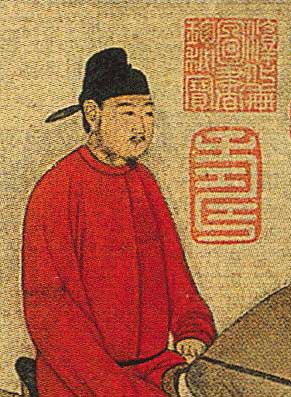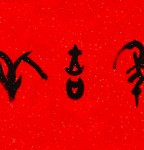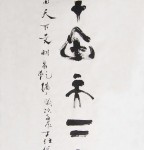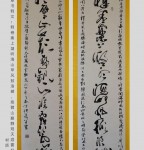| Article Index |
|---|
| Yuan Dynasty, Zhao Mengfu Calligraphy "Rhapsody on Goddess of Luo" |
| Rhapsody on Goddess of Luo -1 |
| Rhapsody on Goddess of Luo -2 |
| All Pages |
Zhao Mengfu's Rhapsody on Goddess of Luo, Yuan Dynasty Art, AD1300, Height: 29.5CM, Width:192.6CM, Running Script Calligraphy.
Zhao Mengfu (Wade-Giles romanization Chao Meng fu, simplified Chinese: 赵孟頫; traditional Chinese: 趙孟頫; pinyin: Zhào Mèngfǔ; 1254–1322) courtesy name Ziang (子昂), pseudonyms Songxue (松雪, "Pine Snow"), Oubo (鸥波, "Gull Waves"), and Shuijing-gong Dao-ren (水精宫道人, "Master of the Crystal Palace").
He was a prince and descendant of the Song Dynasty, and a Chinese scholar, painter and calligrapher during the Yuan Dynasty.(born 1254, Huzhou [now Wuxing], Zhejiang province, China—died 1322), Chinese painter and calligrapher who, though occasionally condemned for having served in the foreign Mongol court (Yuan dynasty, 1206–1368), has been honoured as an early master within the tradition of the literati painters (wenrenhua), who sought personal expression rather than the representation of nature.
He was recommended by the Censor-in-chief Cheng Jufu to pay an audience with Kublai Khan in 1286 at the Yuan capital of Dadu, but was not awarded an important position in office. His work was however, greatly appreciated later by the Confucian inspired Yuan Emperor Renzong.
He was married to Guan Daosheng, who was also an accomplished poet, painter and calligrapher. His rejection of the refined, gentle brushwork of his era in favour of the cruder style of the eighth century is considered to have brought about a revolution that created the modern Chinese landscape painting. He was known for his paintings of horses.
His landscapes are also considered to be done in a style that focuses more on a literal laying of ground. Rather than organizing them in a foreground, middle ground, and background pattern he layers middle grounds at various heights to create a sense of depth. This pattern of organization makes his paintings appear very simple and approachable. It was this characteristic that so many people valued about his style.
Though he was a descendant of the imperial family of the Song dynasty (960–1279) and had been educated in the imperial university, in 1286, Zhao accepted service in the newly established Mongol court. His paintings were among the first after the collapse of the Song dynasty and its academy of painting to show an interest derived from subjects and styles of ancient masters. Zhao is popularly remembered as a painter of horses in the manner of the Tang dynasty (618–907) master Han Gan, but he also painted other animal groups, landscapes, and bamboos. Referring to the antique, he generally avoided superficial beauty by utilizing deliberately simplified colour and compositions and a schematic, even childlike, rendering of forms and scale. His works often display a great variety of brushwork. Zhao’s wife, Guan Daosheng, and his son, Zhao Yong (born 1289), were both painters of note.
Rhapsody on Goddess of Luo -1
Rhapsody on Goddess of Luo -2
| < Prev | Next > |
|---|
- 2011-04-02 - Polite in Chinese Calligraphy, Big Seal Script Banner
- 2011-03-29 - Sheng Jiao Xu, Masterpiece of Wang Xizhi, Running Script
- 2011-03-26 - Calligraphy: All within the four seas will be his brothers, Cursive Script Banner
- 2011-03-21 - Baidu in Chinese Calligraphy, Big Seal Script Banner
- 2011-03-10 - Google in Chinese Calligraphy, 2011, Cursive Script
- 2011-02-22 - Master Hong Yi and his calligraphy
- 2011-02-08 - Qing Dynasty, Weng Tonghe (1830-1904) Calligraphy Gallery
- 2011-01-29 - Hymn of Youyu County Spirit - Cursive Script Vertical Scroll
- 2011-01-24 - 王羲之代表作《十七帖》(347-361年),草书
- 2011-01-20 - 王羲之《乐毅论》,永和四年(348),小楷



























